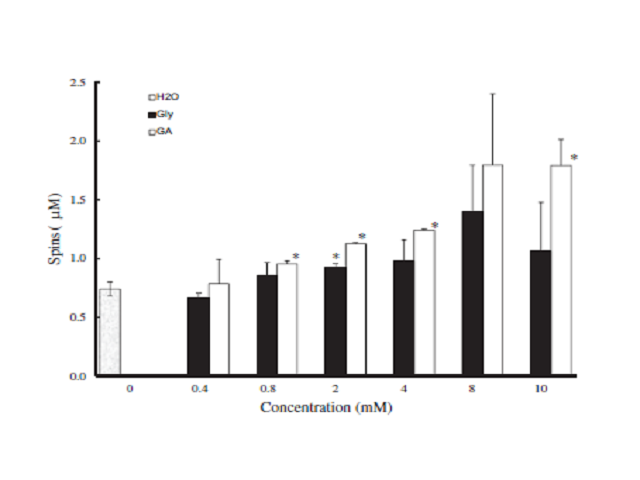Radical scavenging ability of glycyrrhizin
Keywords:
Glycyrrhizin , (Gly) Glycyrrhezic acid (GA), Hydroxyl radical , Superoxide anion radical , 1,1-Diphenyl-2-picrylhydrazyl (DPPH)Abstract
Glycyrrhizin (Gly), a major constituent of licorice root, has been used for the treatment of chronic liver diseases in Japan. Reports have been contradictory as to whether Gly scavenges hydroxyl radicals and superoxide anion radicals.We examined the radical scavenging abilities of Gly and glycyrrhezic acid (GA), an aglycon of Gly. Gly and GA did not scavenge hydroxyl radicals or superoxide anion radicals, but both scavenged 1,1-diphenyl-2-picrylhydrazyl (DPPH) radicals, in contrast to previous reports. The scavenging abilities of Gly and GA might play a role in the treatment of chronic liver diseases.
Downloads
Metrics





